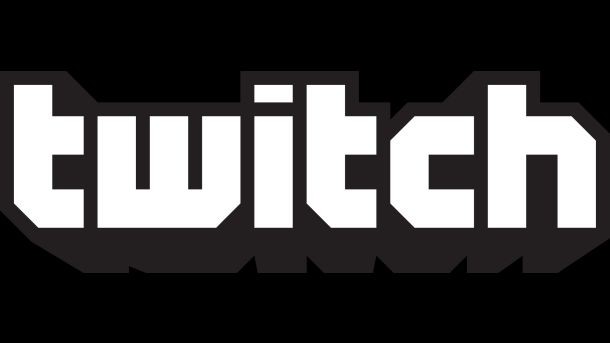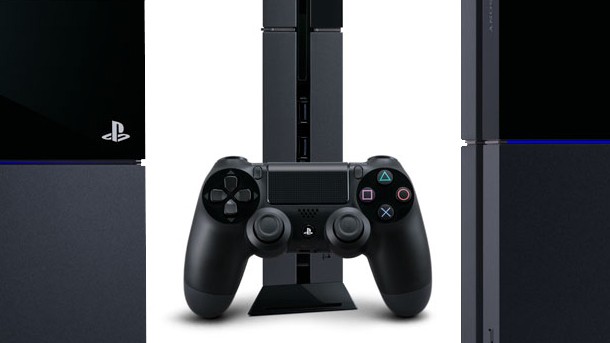Game Informer Interviews Twitch's Matthew DiPietro In Light Of 2013 Report

Twitch today released a new report running down all of its growth statistics for 2013 (view it now). Twitch VP of marketing Matthew DiPietro spoke with us about the report, PlayStation 4 and Xbox One integration, combating streams that violate terms of service, and goals for the year ahead.
In your 2013 retrospective report, you touted the title of world’s largest video site in gaming. Everyone assumes that YouTube is king. How did this happen?
That should be properly contextualized. YouTube as a whole is an absolute behemoth. YouTube changed the web fundamentally. It changed the way people consume content on digital platforms, phones, internet, etc. YouTube is orders of magnitude larger than Twitch at the moment. We are the single largest video platform in the gaming space with that caveat per comScore. So if you pulled a video metrics report in comScore and sort sites by gaming we are the largest site out there. That’s really gratifying. That’s something that we’re really proud of. But our ambitions don’t really stop there. We really intend to be and imagine ourselves to be and are on a trajectory to be one of the top video sites on the Internet full stop. So that’s where we’re headed. It was really gratifying at the end of the year, it was a nice little bookmark to finish off 2013 with that report coming from comScore. That was really exciting, but we see growth way beyond that.
Twitch debuted on Microsoft and Sony platforms this year. How did those business relationships start?
Twitch launched in June of 2011 and for the first two years of Twitch it’s safe to say that the platform was very heavily PC gamer based. So that means games people are playing on PC like League of Legends, Dota 2, Starcraft II, World of Warcraft, games like that were always the perennial top games. And it was mostly because the PC gamer community latched onto broadcasting because PC broadcasting is the easiest way to share your gameplay. Even so, the act of broadcasting your gameplay, even though that is our business, we are the platform that provides you the ability to broadcast your gameplay, doing so is actually not that easy from a user’s perspective. There are lots of hoops you have to jump through.
From a PC you have to download some third-party software, you often have to pay for it, you have to have a pretty high-powered machine. You have to know about lots of geeky things like bitrates and ingest servers and this and that and the other thing. And it’s this MacGyver process that you have to go through in order to do it. On a console it’s even harder. You need to buy external hardware called a capture card which will cost you a couple hundred dollars and then that connects to a PC and it’s this whole thing. Even so we were seeing many hundreds of thousands of gamers every month go through this process, invest all this money, invest all this time in making that happen. Obviously, we saw that the desire on the part of gamers to want to share their gameplay via live video was there.
So what we started to do very early on, it seems like practically since we launched the company, but it was probably more like a year and a half ago, we started talking with Microsoft and Sony with the insight that if we can build broadcasting into the next-generation consoles as a really front-and-center feature, make it one-click simple, then we can turn on the broadest set of gamers across the world, turn them onto broadcasting and make it just a ubiquitous piece of the gaming experience. And that’s really where we’re headed. We’re really excited about it. What we did in the end was to work with both companies, Microsoft and Sony, and we turned the next-gen consoles into essentially bundled hardware and software broadcasting machines and it’s been fantastic. On PS4 the experience is so slick, it’s so easy that we’re seeing adoption rates that are really kind of astonishing. The PS4 has only been out for a couple of months now and we’re already seeing about 20 percent of our broadcaster base is coming from the PS4 as opposed to the PC. We’re really excited about the Xbox One. There is no ETA on that right now, but we’re excited for Microsoft to push that out.

What are the roadblocks to broadcasting on the Xbox One at this point?
I can’t speak to the product roadmap right now. Suffice it to say, we’re working closely with Microsoft to make sure that it happens and the experience is good. We have to leave the comments up to Microsoft on that particular situation.
So the ball’s in Microsoft’s court as far as announce timing?
Yeah, absolutely. More importantly the ball is in Microsoft’s court in terms of what they would like to say about the timing. We need to defer to our partners when it comes to product roadmaps that are really in their court.
Do you plan on the Xbox One implementation working as smoothly as PS4?
We certainly hope so. Our experience so far with the PS4 – I think we’ve proven to ourselves certainly that the desire and demand on the part of gamers is there. More importantly I think what we’re proven also is that the retention is there. So the experience for the gamer is engaging enough that they come back and do it over and over again. That is the metric by which that we’re judging success. It’s pretty easy to get somebody to try something. It’s hard to get them to try something and then come back and do it again and again. And what we’re seeing is really high level engagement, really high level retention so that we’re creating a habit for console gamers and that’s exciting. That’s a mark of success.
Are there any updates to the plan to bring video archiving to PS4?
No updates. But the way to look at this is the integration with PS4 was a first to market. The experience is very robust, it’s very good. But it’s also a first effort. I would consider the Twitch integration on both platforms to be ongoing, interative things. So the experience that you have on Xbox One is not the same experience that you’ll have two years from now. And I would suggest the same thing with PS4.
The other interesting thing to remember about that is you listen to Sony and Microsoft talk about these consoles and they’re talking about having these things in market for the better part of a decade. So we’re really early in the product cycle for the hardware itself, but also for the marketplace that they make available, Twitch being a part of that marketplace. So just like we have a team that is iterating on our iOS application, on our Android application, and is working with game publishers on Twitch integrations, we will be interating on the Twitch footprint on both consoles going forward. Archiving is a very important feature that we’re really excited about. And I would expect that sometime down the road here.
I imagine different setup and display options are rolled into that as well?
Yeah, absolutely. The specifics of the UI are up to Microsoft to talk about, but with all of our integrations there are a few basic features that seem to be necessary to having a good experience and that is audio capture, webcam capture, and chat integration. With those three basic features that’s what makes it valuable to the Twitch community because those are the engaging features that make it both a good viewing experience, a very engaging experience in terms of chat, but also a good broadcasting experience for the channel owner as well so that they can put their face out there and they can read the chat and respond to the community.
Who knows what these integrations will look like a couple years down the road. Our goal, and this is really not an exaggeration, our goal really is to make broadcasting an always-on piece of the gaming experience. If you talk to Emmett Shear, our CEO, he really believes that we can make playing a game the same thing as broadcasting one. It’s just what you do when you turn your game on. You’re broadcasting it because why wouldn’t you? With the PS4 we’re starting to see it’s so easy that that really is kind of the equation.
How would you compare developing for consoles versus the traditional PC platform?
It’s a completely different world really. Until we started working with Microsoft and Sony we had never really worked so closely, so hand in hand with third parties. Because the broadcasting space for the PC is very different. There are dozens and dozens of broadcasting software options out there. Some of them are free. Some of them you have to pay for. Some are very robust in terms of providing a professional level broadcasting experience. Some are very simple. There are all sorts of different options. Most of whom we know. But most are building their products totally independently.
We will often give them advice and say, “This is the way you should do this,” or “This would make a better product.” But the situation with Microsoft and Sony was the first time we worked really hand in hand, very closely with large corporations like Sony and Microsoft in order to build Twitch into a branded experience on hardware. And you can imagine how exciting that is for a company like us to talk to companies that are putting those devices into millions and millions of American households. Between the two devices those are going to provide penetration into greater than 50 percent of American households. So the potential is just amazing. And it’s been a lot of fun to work with those guys the last couple of years.

What are Twitch’s main goals for 2014?
We have lots of goals and we have lots of things going on at any given time between improving our viewing applications across all of the platforms (Xbox 360, iOS, Android, Xbox One, PS4, etc.). That’s a major focus, creating that multi-screen experience. Probably the biggest challenge and if you were to ask anybody around the office what is the most important challenge in terms of delivering a high quality experience to our 45 million viewers globally is continuing to enhance and build out our infrastructure that makes that video delivery possible. And that’s not a small challenge. That’s a really big deal that some of the smartest guys in the space we have on staff here and they are globetrotting, just building servers and datacenters and making them more efficient. Enhancing our video system itself to make better use of all of that hardware so just matching our capacity with the growth of our audience is a really big challenge and one that we take very seriously.
Just in the last few months we’ve gone from somewhere around 600,000 or 700,000 unique broadcasters per month to, in December, we had just shy of 1 million. That growth is across all platforms, but probably most heavily attributable to the PS4 broadcasting integration. So that’s really exciting. That’s a broadcaster base that is putting us in a space where we are becoming the default social fabric that gamers rely on to connect with each other. They obviously use Facebook and Reddit and forums to a lesser extent, but what we’re finding is that video both on Twitch and YouTube for that matter is becoming the media, the place where gamers gather and share their passions and excitement around games in all of the various communities that they’re a part of. Whether that’s PC, console, shooters, strategy games, sports games, etc. That’s really exciting for us.
Is there any concern going forward in light of copyright claims on videos featuring gameplay?
Every day that becomes less of a concern. The smart game publishers out there understand that activating the community around creating video based on their games is only a value add for them. When you turn the streaming community or the YouTube community onto your games what you’re doing is creating a massive community marketing channel for your games. One of the reasons gamers come to Twitch on any given day is to check out games that they don’t own yet so that they can really see a detailed, real-world view of what the games are. And that’s the only way that you can do that short of buying the game.
So Twitch has really become a very valuable marketing channel for triple-A titles and indie titles across the whole industry. And you can see the way that games are for the last two years and continuing more and more are taking that very seriously. Building spectatorship into the gameplay itself, into the game mechanics, making it more friendly for streaming and YouTube capture. They’re building that functionality into both the games in addition to putting them on platforms where that kind of functionality exists in terms of game capture and live streaming. So I think it’s safe to say that we’ve arrived at a spot where that kind of functionality is just ubiquitous. It’s demanded by gamers, and game companies have realized that it’s absolutely necessary to have.
Is there any interest in working with Nintendo and bringing a designated Twitch app to the Wii U?
We’re talking to quite literally everybody in this space. Every game. Every platform. We’re talking to them in one way or another. But those are discussions we can’t detail.

Twitch VP of marketing Matthew DiPietro
In late December there were some denial of service attacks against several game servers and Twitch user Phantomlord had broadcast some of his interactions with the group that claimed responsibility. He kept his channel rolling and continued to make money. It seems like a gray area of supporting illegal activity. What was the decision making process in allowing this stream to continue airing and what does Twitch do to ensure streamers are not broadcasting illegal activity?
First of all, that was a very unique situation that I don’t believe we had ever really seen before. But what we do generally in terms of our moderation of streams is we have kind of a stack the way we deal with it. The first is we have a technology layer that helps us monitor and identify activity that might not meet our terms of service. We have a full-time staff that monitors this sort of stuff and then we have a layer of volunteer administrators, 40-plus people, that are just passionate community members that work with us very closely to help us moderate the site.
This situation came up, we learned about it, we reached out to the channel owner and I believe we rectified the situation – I believe in something like 30 minutes. So it was definitely a learning experience. It was something that we hadn’t seen before, but I think we dealt with it in a very proactive, expedient way in which as far as Twitch is concerned, we really did everything we could to make sure that our small part in it was proactively taken care of. Of course we can’t personally do battle with a hacker group and the targets that they decide to put in their sights. But we dealt with that within 30 minutes I believe.
So activities like communicating with hacker groups over broadcast is something that you plan to address as quickly as possible in the future?
Oh yes, of course. I think this was very isolated – certainly the first situation that we noticed anything like that. I would think it’s a very isolated situation as well.

Get the Game Informer Print Edition!
Explore your favorite games in premium print format, delivered to your door.
- 10 issues per year
- Only $4.80 per issue
- Full digital magazine archive access
- Since 1991









